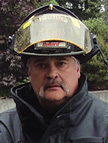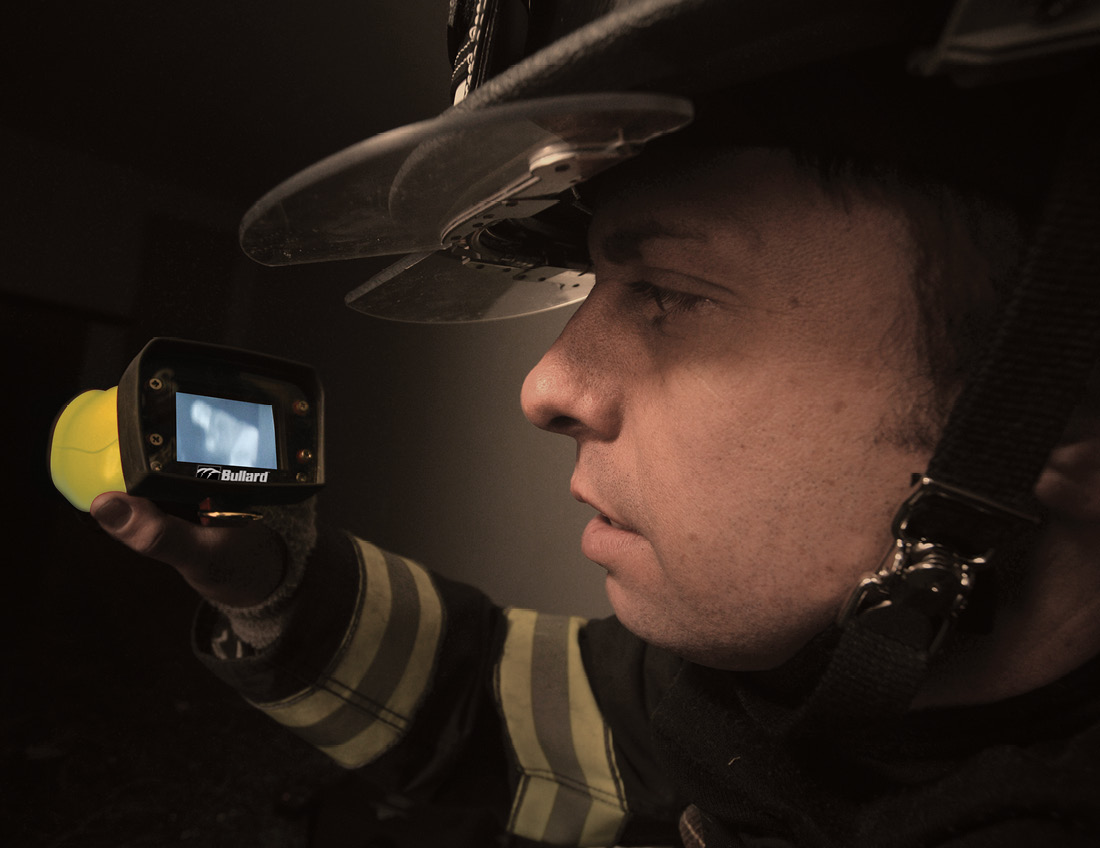
Thermal Imaging | Manfred Kihn
When looking through the lens of a thermal imager (TI), what is it you are looking at? We know that TIs are designed to process emitted infrared heat signatures and convert that information to an LCD screen to be interpreted by the firefighter.

We also know that the basic shades are white (identifying objects as hot or warm), black (identifying objects as cold or cooler), and gray (for all the temperatures in between).
It’s important to note that the TI doesn’t really care how warm or cold an object is, simply how much warmer or colder it is than the object next to it, which brings us back to the question: What is it you are looking at? Keep reading to find the answers.
Remember, a TI is detecting infrared radiation (IR), also known as heat, which comes from anything with molecular activity, whether it be passive, active, or direct emitters. Emissivity is defined as a measure of a material’s ability to radiate absorbed energy. Picture a brick and a shirt lying on a sidewalk in Phoenix, Arizona, in July. Both warm up, but the brick absorbs more heat than the shirt and, once the sun goes down, the shirt gives its heat up faster than the brick. This means that the emissivity of the shirt is lower than the brick because it radiates heat faster. Defining passive, active, and direct emitters below will help us better understand what our TI is telling us:
- Passive emitters primarily absorb and dissipate IR energy from active or direct emitters (inanimate objects—i.e., tables, chairs, beds, other furniture, etc.).
- Active emitters emit IR energy in low to medium strength and varying intervals (living organisms—i.e., humans, animals, plants, etc.).
- Direct emitters are constant high-strength IR energy emitters (energy sources—i.e., TVs, kitchen appliances, clock radios, cordless phones chargers, computers, etc.).
Think about a search and rescue situation using a TI and be sure to look for obvious forms or shapes of the victims, as they could be in different configurations of sitting, lying down, or crouching. Not all victims are going to be visible, as they could also vary in color (white, black, or gray), depending on the temperature of the room or the environment in which they are located.
In a bedroom, heat signatures can be masked depending on the type of bedding being used such as a thick duvet. Also, consider looking for a frail elderly woman with not a lot of body mass and how easily you could miss her when searching with a TI. You cannot rely on the TI alone but must also conduct a manual search on top of and below the bed to be safe. You could also be picking up on your TI what I call nuisance heat signatures that are produced by direct emitters, which can be found on nightstands next to the bed. If you practice a lot with your TI, you should understand what those direct emitters look like.
Now let’s look at an elevated temperature situation where you must understand the differences between sensitivity modes or gain states that your TI can produce and is in. In the wrong mode, you could easily miss your search victim because he will not be as visible to you or may be masked. I use a trick I call “tricking the TI” by lowering or pointing the TI at the floor to get it to switch modes from low gain back to high gain so its sensitivity will be more focused at lower-temperature objects like your victim and not focused on the heat from the fire.

1 Firefighters need to understand how a thermal imager interprets heat signatures to successfully use this life-saving tool. (Photo courtesy of Bullard.)
Another heat signature that is masked is that of a fellow firefighter because he is wearing personal protective equipment, so the rapid intervention team should look for the shape of a helmet, self-contained breathing apparatus, and face piece. Practice my “tricking the TI” tip often, because it could possibly save a life.
Related Content
- Thermal Imaging: Knowing Your Thermal Imager
- Thermal Imaging in RIT
- Thermal Imaging: Using Your Senses
You can unmask some other heat signatures by scanning with your TI slowly and methodically. If you scan too quickly, your brain cannot compute what it is you are looking at. I would love to hand you a silver platter with different shapes, sizes, and colors of heat signatures to help you understand, but it’s just not that simple. Practice is the easiest way to help you identify heat signatures.
Here’s another area where heat signatures can be masked when conducting size-up of a structure. Let’s say that the structure is made up of red rough brick on all four sides and has an asphalt shingle roof, both of which materials have a high emissivity value. Now let’s make it a sunny day and you have a challenge on your hands. It is vitally important to conduct a thorough 360° search of this structure because any heat from the fire inside can now be masked by the angle and direction of the sun on the outside walls that are exposed to the sunlight.
A TI may not detect a basement fire when scanning the ground-level floor. This is because the wood flooring along with carpet and laminate flooring tend to insulate and prevent heat transfer, again masking the heat signature. It is then imperative to try to gather as much information with both the TI and your naked eye as possible to determine if there is a lower-level fire when conducting your 360° search.
Always remember four key firefighting safety objectives when using a TI:
- Identify hazards.
- Maintain personnel accountability.
- Identify emergency egress points.
- Evaluate structural integrity.
A TI is useless in the hands of an inexperienced operator, so be sure to keep in mind these three golden rules when using a TI:
- You have to look at it.
- You have to interpret it.
- You can’t expect the TI to do it for you.
Manfred Kihn is a 19-year veteran of the fire service, having served as an ambulance officer, emergency services specialist, firefighter, captain, and fire chief. He has been a member of Bullard’s Emergency Responder team since 2005 and is the company’s fire training specialist for thermal imaging technology. He is certified through the Law Enforcement Thermographers’ Association (LETA) as a thermal imaging instructor and is a recipient of the Ontario Medal for Firefighters Bravery. If you have questions about thermal imaging, you can e-mail him at manfred_kihn@bullard.com.

